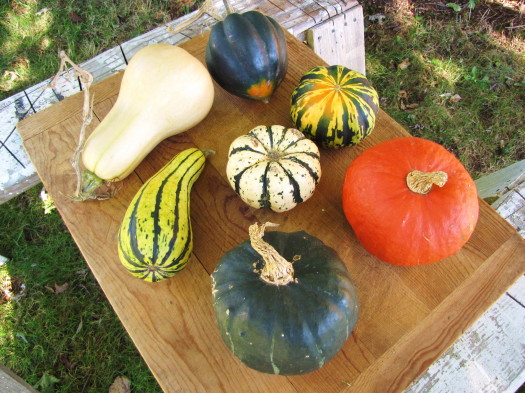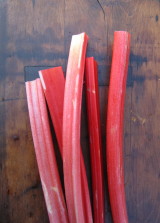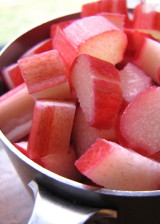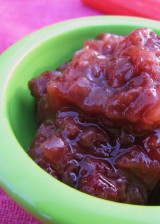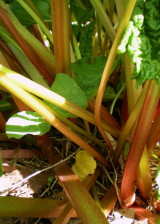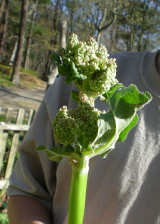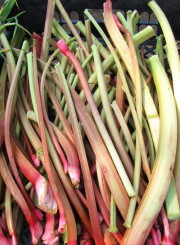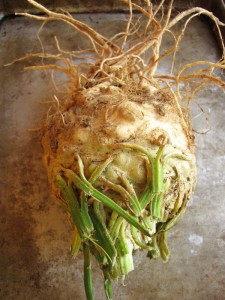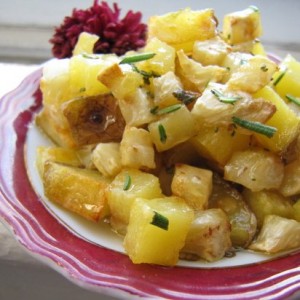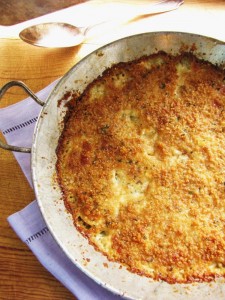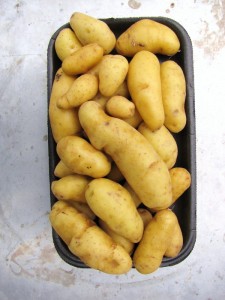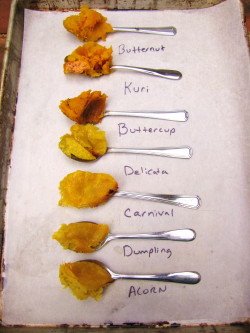
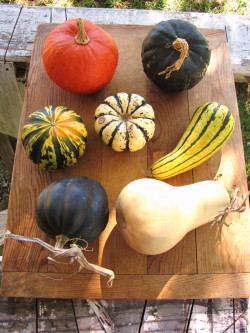 Sometimes, you just don’t know what you’re getting yourself into. Take my boyfriend, Roy, for example. I’m sure when he met me, he had no idea that one day he’d be standing around the kitchen island (which he built for me) with seven spoons and a heap of roasted squash in front of him. Fortunately, what I didn’t know (but suspected) when I met him, is that he’s a really good sport. Last Sunday, he agreed to do the winter squash taste test with me. Lucky him.
Sometimes, you just don’t know what you’re getting yourself into. Take my boyfriend, Roy, for example. I’m sure when he met me, he had no idea that one day he’d be standing around the kitchen island (which he built for me) with seven spoons and a heap of roasted squash in front of him. Fortunately, what I didn’t know (but suspected) when I met him, is that he’s a really good sport. Last Sunday, he agreed to do the winter squash taste test with me. Lucky him.
I dreamed up this little experiment after we found ourselves in possession of several different kinds of winter squash. I’ve loved taste comparisons ever since I was introduced to them at culinary school years ago. We did a lot of them at Fine Cooking, too, in order to recommend brands of chicken stock or canned tomatoes or olive oil to cooks. The worst taste test we ever did was butter. Tasting 8 different brands of butter in one morning will make anyone feel sick. The best? Bittersweet chocolate, of course. In fact, I’ve learned so much about flavor differences in both natural and manmade products over the years from taste tests, that I’m constantly urging other cooks to conduct their own at home. (A great place to start is with something you buy and use a lot, like extra-virgin olive oil. Buy a few different grocery-store brands and taste them side by side to find your favorite—you’ll be amazed at how different they are. Lately I’ve been liking Trader Joe’s Spanish olive oil.)
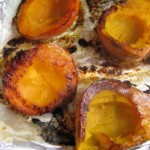
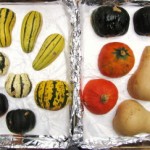 But not to belabor the point, here’s how we conducted the squash test: I cut each of the squash in half, scooped out the seeds, seasoned them ever so lightly with a little salt, and roasted them, cut side-down, on buttered parchment paper, until they were completely tender and lightly caramelized (about 1 hour 20 minutes on average). I turned the squash over, let them cool a bit, and scooped some of the flesh out of each for us to taste side by side. We each had one or two bites of each squash, and I took notes on the taste, texture, and color.
But not to belabor the point, here’s how we conducted the squash test: I cut each of the squash in half, scooped out the seeds, seasoned them ever so lightly with a little salt, and roasted them, cut side-down, on buttered parchment paper, until they were completely tender and lightly caramelized (about 1 hour 20 minutes on average). I turned the squash over, let them cool a bit, and scooped some of the flesh out of each for us to taste side by side. We each had one or two bites of each squash, and I took notes on the taste, texture, and color.
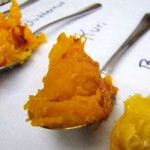
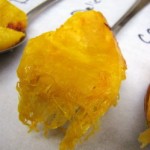 The first thing I noticed of course, before we even tasted, was the big range in color and texture among the squash. (To identify the squash, see the photo at the end of the blog with IDs underneath.)The Red Kuri, Buttercup, and Butternut squash have deep orangey-red flesh and a dense texture. The Delicata, Acorn, Sweet Dumpling, and Carnival all had a more yellowy golden flesh, although within them, the texture varies (Delicata and Dumpling being creamy, Acorn and Carnival more fibrous.) The cool part of the comparison, though, was how different they all tasted. Here’s what we thought.
The first thing I noticed of course, before we even tasted, was the big range in color and texture among the squash. (To identify the squash, see the photo at the end of the blog with IDs underneath.)The Red Kuri, Buttercup, and Butternut squash have deep orangey-red flesh and a dense texture. The Delicata, Acorn, Sweet Dumpling, and Carnival all had a more yellowy golden flesh, although within them, the texture varies (Delicata and Dumpling being creamy, Acorn and Carnival more fibrous.) The cool part of the comparison, though, was how different they all tasted. Here’s what we thought.
Butternut—smooth, rich, dense flesh with a distinctively nutty flavor
Red Kuri—texture like a baked potato, very robust smoky-nutty flavor, intensely “squashy” in a good way; deeply colored (Susie’s favorite)
Buttercup—dense flesh with a very flavorful flesh reminiscent of caramel and peanuts
Delicata—very creamy flesh, light and bright tasting, flavor hints of summer squash
Carnival—moderately fibrous flesh, light sweet-sour flavor, our least favorite (sorry, Carnival)
Sweet Dumpling—flesh is a bit fibrous but creamy too, very sweet with a bit of tang, a light flavor
Acorn—fibrous texture but with a complex nutty-sweet-bright flavor (Roy’s favorite)
So there you have our unofficial and biased results. I’d recommend trying the Red Kuri if you haven’t, and I’d consider using it or Buttercup in place of Butternut in soups for a richer flavor. Though Carnival is a beguiling looking squash, I’d definitely stick with the similar but better tasting Acorn for stuffing, or go with the pleasantly sweet and creamy Delicata or Dumpling.
Squash IDs, clockwise, starting from top left: Butternut, Acorn, Carnival, Red Kuri, Buttercup, Delicata, Sweet Dumpling

